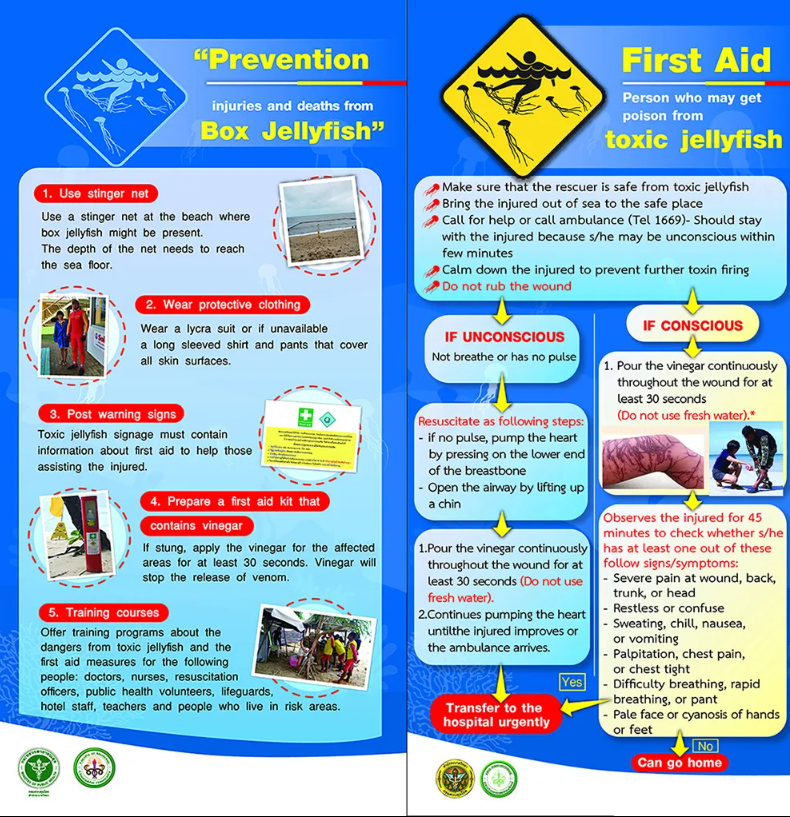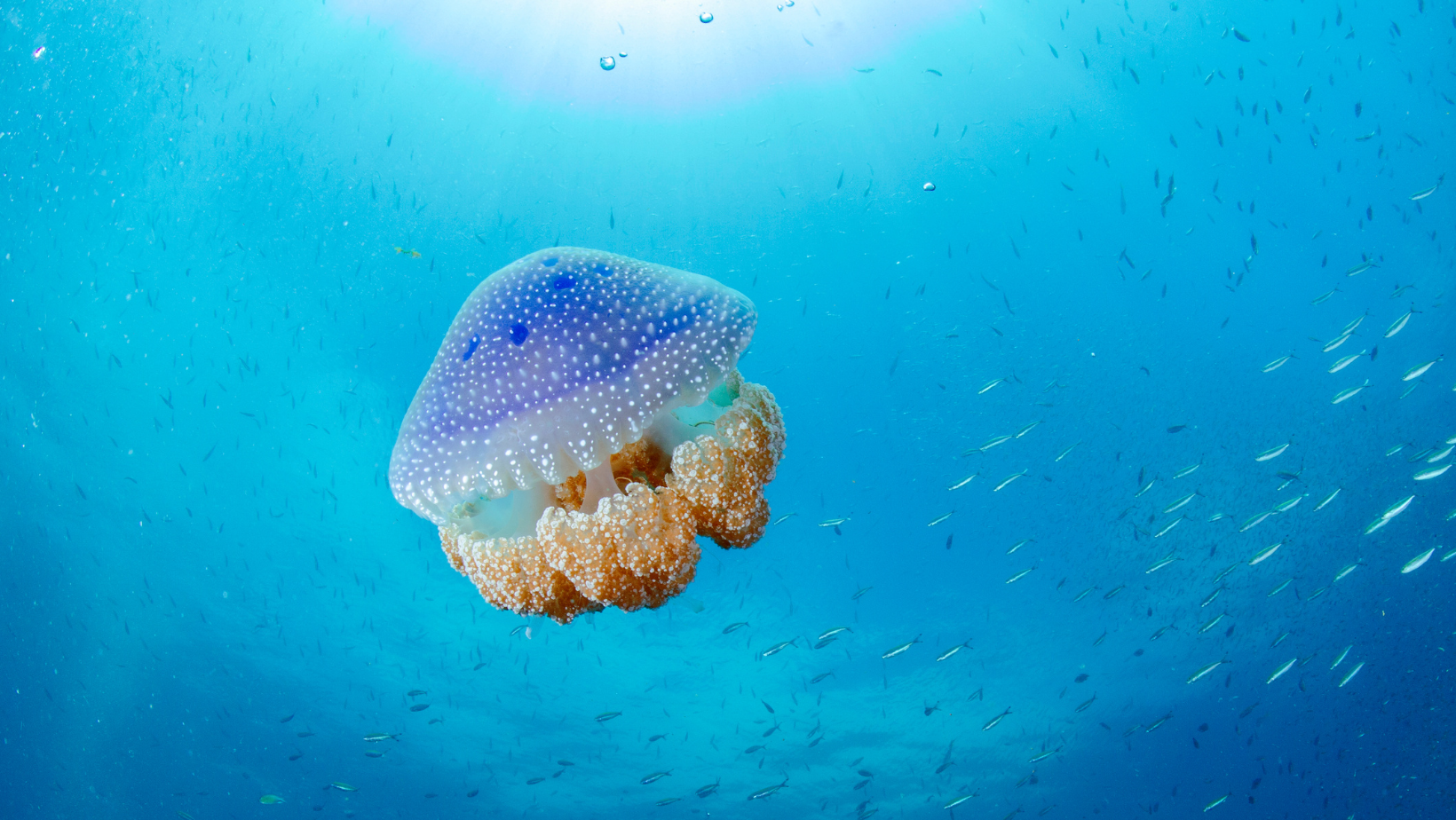In light of recent incidents involving jellyfish stings, the Tourism Authority of Thailand (TAT) is advising tourists to exercise caution when swimming or snorkelling in Thai waters. Signs warning of the dangers of jellyfish have been prominently displayed at various beach resorts, and First Aid stations have been set up to provide immediate assistance if needed.

Safety Measures in Place
- Warning Signs: Look out for jellyfish warning signs posted at beaches.
- Swim with a Partner: Try to swim with a partner to ensure mutual support.
- Protective Clothing: Consider wearing a lycra suit or long-sleeved shirt and pants to cover exposed skin surfaces.
- Avoid Dead Jellyfish: Do not touch or approach jellyfish, even if they appear dead on the beach, as they can still sting.
- Follow Lifeguards’ Advice: Heed the advice of lifeguards or tourism operators regarding safe swimming areas.
- Avoid Risky Conditions: Refrain from swimming after rain, at night, or outside designated swimming areas.
First Aid in Case of Sting
- Emergency Response: If stung, bring the injured person to a safe area and call an ambulance immediately (Tel. 1669).
- Prevent Further Spread: Keep the person still and calm to prevent the toxin from spreading.
- Vinegar Application: Pour vinegar over the wound for at least 30 seconds to neutralize the venom. Do not use fresh water or rub sand on the wound.
- Watch for Symptoms: Observe the person for signs of severe pain, restlessness, sweating, chest pain, breathing difficulty, or unconsciousness.
- CPR: If the person is unconscious, perform CPR until help arrives.
Regions and Seasons of Concern
- Seasonal Occurrence: Jellyfish are most commonly found in Thai waters between July to December and November to April.
- Specific Areas: Box Jellyfish have been spotted off the beaches of Ko Lanta, Hat Nopparatthara–Mu Ko Phi Phi National Marine Park, Nam Bo Bay in Phuket, Hua Hin, Cha-am Beaches in Phetchaburi, Ko Tao, Ko Samui, Ko Pha-ngan, Ko Mak, and Ko Kut.
While jellyfish stings are rare, it’s important for travellers to be aware of the potential risks and take necessary precautions to ensure a safe and enjoyable experience in Thailand’s beautiful waters.
Fun Fact: Did You Know?
Jellyfish have been swimming in the world’s oceans for over 500 million years, making them one of the oldest living creatures on Earth.
Jellyfish Trivia
- Some jellyfish are bioluminescent, meaning they can produce their own light.
- The immortal jellyfish, also known as Turritopsis dohrnii, is capable of reverting to its polyp stage after reaching maturity, effectively making it biologically immortal.
- Jellyfish have no brains, hearts, or bones, yet they are incredibly efficient hunters.
- Jellyfish populations can fluctuate dramatically based on environmental factors, leading to phenomena like jellyfish blooms.
- The Portuguese man o’ war, often mistaken for a jellyfish, is actually a colony of organisms working together.
- The box jellyfish is considered one of the most venomous creatures in the ocean, with some species capable of causing severe reactions in humans.
- Some species of jellyfish are considered a delicacy in certain cultures and are even used in traditional medicine.



